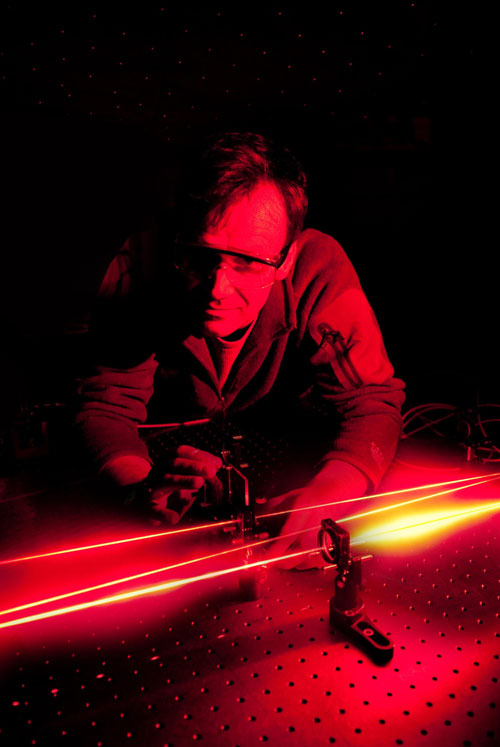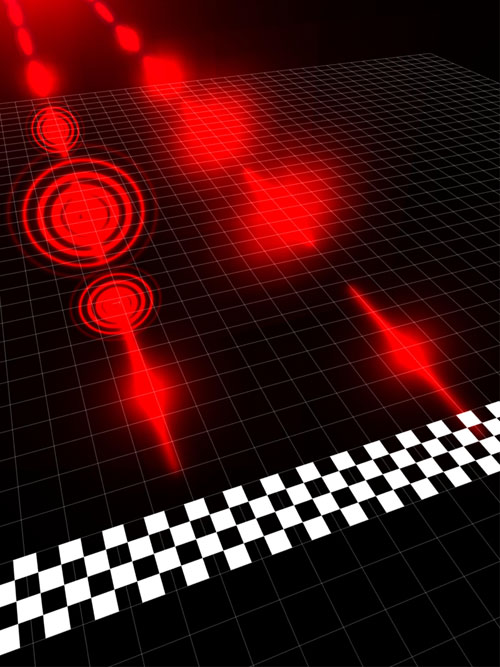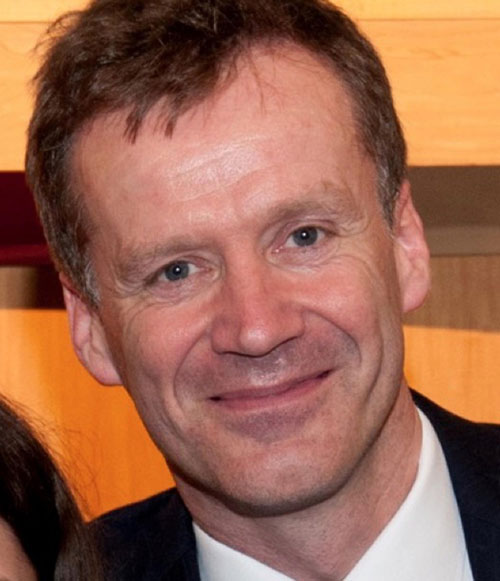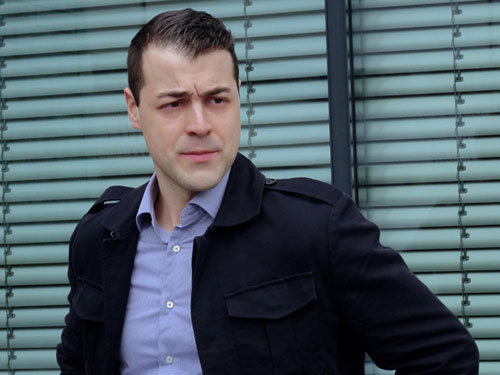SCOTTISH scientists have worked out how to put the brakes on the speed of light.
Generations of school pupils have been taught that light slows down in water and glass but speeds up again afterwards.
Researchers based in Glasgow and Edinburgh have now managed to slow down light as it passes through air – without the beam regaining its speed.

The team used a “mask” – similar to light passing through film in an old-fashioned projector – to change the shape of the beam.
That resulted in a permanent speed reduction in the region of 3,000 metres per second. And after passing through the mask, the light did not accelerate to its normal velocity.
Dramatic
While it may sound dramatic, researchers say the speed cut is tiny – only one thousandth of one percent of the speed of light.
And the scientists at Glasgow University and Heriot-Watt, Edinburgh, concede there are presently no obvious real world applications for their remarkable findings.
Even so, by cutting the speed of light in air, they have achieved what was once considered impossible and taken another step to understanding “how the world works”.

Glasgow Professor Miles Padgett, one of the lead authors of the paper published today (Fri), said the mask they used was similar to a cinema projector.
He said: “Shapes are programmed onto the projector and when a beam of light is shone through them, the light changes its shape and slows.
“This is different from light shone through water or glass, where the shape of the beam is not affected.
“After light has passed through water or glass, it speeds up again. However, once the light has passed through one of these masks the top speed is indefinitely reduced.”
He added: “I think what is nice about our experiment is that it is simple – we were able to focus on one photon of light which made it easier to measure.

“As far as I know, we’re the first researchers to do this. At the minute we’re not aware of any practical applications for this finding, but I’d like to hope that there is a role within science where we just find out how the world works.”
Quirky
The idea for the experiment arose two years ago when Professor Padgett met with Daniele Faccio from Heriot-Watt University.
He said: “We met up and came up with this quirky idea. The findings show that what we learnt in school was not quite right.

“It might seem surprising that light can be made to travel more slowly like this, but the effect has a solid theoretical foundation and we’re confident that our observations are correct.
“The results give us a new way to think about properties of light and we’re keen to continue exploring the potential of this discovery in future applications. We expect that the effect will be applicable to any wave theory, so a similar slowing could well be created in sound waves, for example.”
The paper, titled ‘Spatially Structured Photons that Travel in free Space Slower than the Speed of Light’, is published in Science Express, which provides electronic publication of selected papers in advance of print in the journal Science.

